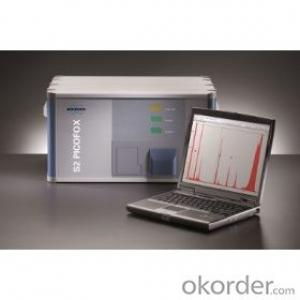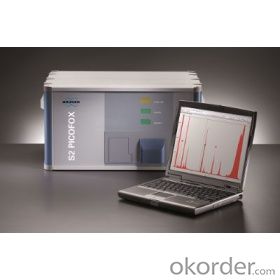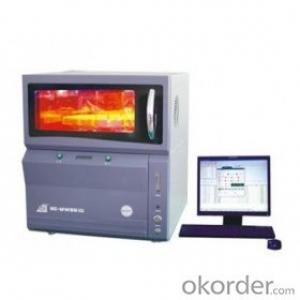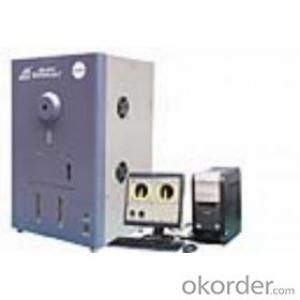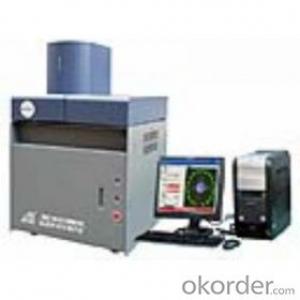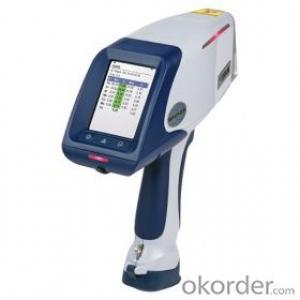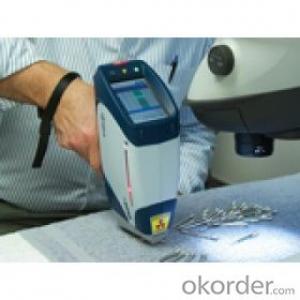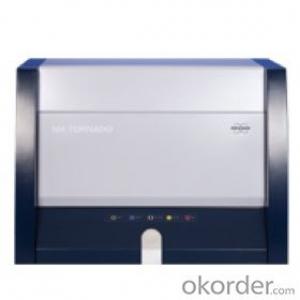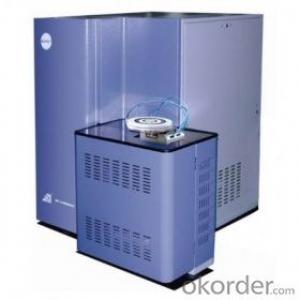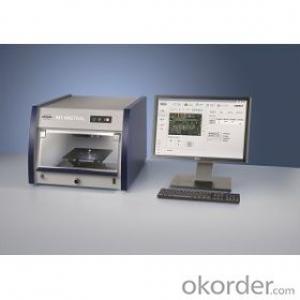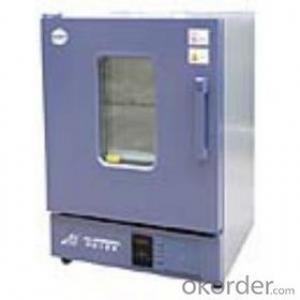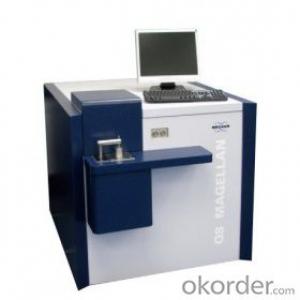Heavy metal content tester
- Loading Port:
- China Main Port
- Payment Terms:
- TT OR LC
- Min Order Qty:
- -
- Supply Capability:
- -
OKorder Service Pledge
OKorder Financial Service
You Might Also Like
Heavy metal content tester
Total reflection X-ray fluorescence works (TXRF)
Principle of X-ray fluorescence spectrometry (XRF): the atomic level by the original X-ray excitation, the issue of secondary X-ray fluorescence. Therefore, XRF analysis can:
According to the fluorescence wavelength and energy, to determine the element;
The concentration of each element can be calculated based on the intensity of fluorescence.
X-rays by a Mo target or W target produced in Ni / C multilayer film reflective artificial and monochromatic. Flat beam with a very small angle (0.3 - 0.6 °) grazing the sample holder containing the sample, and total reflection occurs. Characteristic fluorescence generated by the sample is energy dispersive detector (XFlash® detector) to detect, by coupling the strength of a multichannel analyzer measurement.
The biggest difference conventional XRF, total reflection fluorescence (TXRF) is the use of monochromatic light and the total reflection optical member. In the total reflection beam irradiated samples, reducing the absorption, and the sample and light scattering substrate materials. The result is greatly reduced background noise, and therefore there is a much higher sensitivity and significantly reducing the matrix effect.
Total internal reflection fluorescence (TXRF) The main advantage is that, compared to other atomic spectroscopy methods such as AAS or ICP-OES, no memory effect.
Total reflection fluorescence analysis, the sample can be prepared in a total reflection X-ray sample holder. Therefore, the sample holder diameter 30mm, typically of acrylic material or quartz glass.
Liquid sample directly onto the sample holder, typically using a micropipette transfer pipette a few microliters (μl) of test solution to the sample holder. Then evaporated and dried in an oven or a desiccator.
Solid sample, different sample preparation methods. Powder samples (suspended matter, soil, minerals, metals, pigments, biological samples, etc.) can be placed directly on the sample holder with the sample measured directly. A typical approach is to use a spoon or airlaid transfer several micrograms (μg) of the sample to the sample holder.
Single small sample (particles, slivers, etc.) can also be prepared directly by methods analogous sample.
In addition, the powder sample may be a volatile solvent such as acetone or methanol to prepare a suspension, suspension was pipetted into a sample holder, microwave digestion methods may also be used.
Main features:
Main technical characteristics
Available for solids, powders, liquids, suspensions, filter material, airborne particulates, such as film samples for qualitative and quantitative analysis of a range of elements 13Al-92U, content range ppb to 100%, the detection limit to 2pg.
Require less sample, less than 10 micrograms of suspended solids in liquids and 1-50 microliters of sample powder samples.
Unique portable total reflection fluorescence analyzer, equipment compact, integrated design, without any auxiliary equipment and gas, liquid nitrogen, etc., can get a site analysis.
1 and 25 automatic injector two designs were applied to a fully automatic analysis of small samples and large numbers of samples per day.
XFlash®SDD fourth generation silicon drift detector, using a Peltier cooling technology, no nitrogen, no consumption. Resolution better than 160eV at MnKa 100Kcps.
Due to the total reflection no background fluorescence intensity is directly proportional to the element content. Factories have been calibrated standard curve, users do not need standard quantitative analysis can be carried out.
Applications: water, wastewater, soil pollution elements; food, medicine, forensic, environmental protection, ceramics, cement, building materials, geology; blood, urine, tissue toxic elements.
- Q: How about doing sales of analytical instruments?
- To understand the selling skills of conventional products, analyze customer problems, resolve demand points, screen out prospective customers, select customers who have genuine purchase intentions, and discard those who cannot buy from themselves. The process of screening customers is no more than three questions: whether there is money or budget, there is no right to make a final decision, there is no need to sell products to those "eager" customers. Find customers who have a need for their products. Most of the time, customers don't know what they need, and customers will only realize when they find the problem. The discovery can take a few seconds or a few years, depending on the nature of the problem itself and the customer's own situation. Therefore, to learn to motivate customers to customers yourselves, take the initiative to help customers identify problems, and help customers to solve these problems, more important is to let the customer believe in yourself than anyone else has the ability to solve customer problems. Key skills: identify what problems you can help your clients improve or solve, and then plan and design questions that will help you discover and develop those issues".
- Q: Which is good for full automatic bacterial identification and drug sensitivity analyzer?
- The French bioMerieux, it is the authority of microbial community in the world.
- Q: How to select and analyze the elements in iron and steel?
- How to select and analyze the elements in iron and steel?Carbon and sulfur in steel can be used HXE series of carbon sulfur analyzer, the instruments are HXE-4BS type carbon sulfur analyzer, HXE-6B type microcomputer automatic carbon sulfur analyzer, HXE-7B type computer automatic carbon sulfur analyzer of several alternative.
- Q: Analytical instruments used in the chemical industry, if possible, specify specific industry instruments
- For example, the Undergraduate Teaching Steering Committee of the Ministry of education puts forward the following basic requirements for the configuration of instrument analysis experiment, which can serve as a reference for laboratory construction.Equipment must be equipped with: visible spectrophotometer, UV visible spectrophotometer, infrared spectrometer, atomic emission spectrometry, atomic absorption spectrophotometer, gas chromatography, high-performance liquid chromatography, electrochemical workstation.
- Q: In the measurement of resistance capacitance coupled amplification circuits, why are the common ends of all instruments connected together?
- In order to avoid unnecessary induction and interference between the cases
- Q: How to take the most accurate total station instrument height?
- Mark down from the natural instrument with the plumb line, the vertical ball tip just reaches the ground, and then take the instrument sign ruler of plumb line end to plumb tip distance.
- Q: Spectral analyzer to do CCD pass, however
- (1) the high stability X ray source provides the required X ray, changes the X ray tube anode target material, can change the X ray wavelength, adjusts the anode voltage, can control the intensity of X ray source. (2) the adjusting mechanism of sample and sample orientation shall be a single crystal, powder, polycrystalline or microcrystalline solid block. (3) the X-ray detector detects the diffraction intensity or simultaneously detects the diffraction direction. By means of an instrument, a recording system or a computer processing system, the polycrystal diffraction pattern data can be obtained. (4) the image analysis and processing system, modern X ray diffractometer, are equipped with a special diffraction pattern processing and analysis software system, they are characterized by automation and intelligence. X X ray fluorescence ray fluorescence substance by primary X rays or other radiation photon source, X ray produced by the secondary shock phenomenon.
- Q: What is the height of a level instrument? What is the back view reading?
- 1, the level must be three axis relationship check qualified; 2, before reading, level must be precise leveling; 3, the staff must be leveling feet vertical plumb;
- Q: Which analytical instrument is suitable for the determination of the gold content of gold plating bath?
- Iodometric method for the destruction of cyanide with hydrochloric acid, and the dissolved gold aqua regia and converted to three gold chloride, and free iodide precipitate quantitatively, and then the standard solution of sodium sulfate free iodine thiosulfate titration, to determine the amount of gold.Reagentofuse: hydrochloric acid (relative density l.19), 1:3 HCl, aqua regia (3 volume of concentrated hydrochloric acid and concentrated nitric acid, l volume) 10% solution of potassium iodide, 1% starch solution, standard 0.025mol / L sodium thiosulfate solution.The methods of analysis are as followsThe pipet 2ml plating solution in a 300ml conical flask.Adding 20ml concentrated hydrochloric acid in the electric furnace evaporated to dry (in the ventilation cabinet)The adding chloroazotic acid 5 ~ 7ml, 70 ~ 80 DEG C to slowly evaporate into the slurry, but never dry.Then dissolve and wash the bottle wall with 80ml hot water. After cooling, add l:3 hydrochloric acid 10ml and 10% potassium iodide 10ml, placed in the dark 2min.Add 5ml starch indicator, titrate with 0.025mol / L sodium thiosulfate to blue, disappear as the end point
- Q: What kind of electrical, automatic and instrument equipment are needed in the sewage treatment plant?
- Instruments and meters: including water level, water pressure, water head loss, voltage, current, electricity and other measuring instruments, ultrasonic liquid level gauge, pressure sensor, gas flowmeter, electromagnetic flowmeter, ultrasonic flowmeter.
Send your message to us
Heavy metal content tester
- Loading Port:
- China Main Port
- Payment Terms:
- TT OR LC
- Min Order Qty:
- -
- Supply Capability:
- -
OKorder Service Pledge
OKorder Financial Service
Similar products
Hot products
Hot Searches
